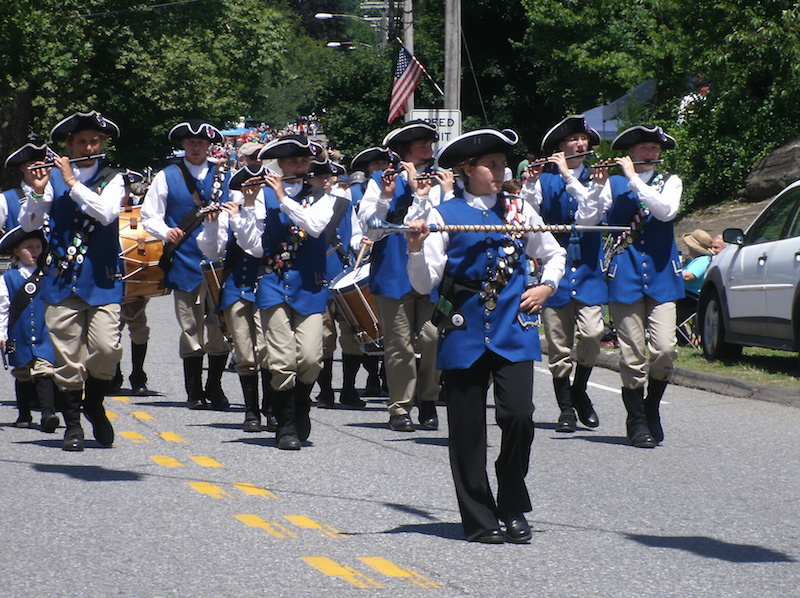[vc_row][vc_column][vc_column_text]Happy Independence Day to those celebrating in the United States! Music has been with us from the beginning. Native peoples had their own music, used for ceremony and celebration. Settlers from Western Europe, mainly from the British Isles, the Netherlands, France, and Spain, brought with them a rich musical tapestry. Folk songs, tavern songs, and religious music from these cultures provided part of basis of an American musical sound. The music of the fields – songs of the slaves – were the bedrock of gospel, jazz, blues, and rock and roll, which were some of the first truly American original musical genres. Let’s learn a bit about American musical heritage!
[/vc_column_text][/vc_column][/vc_row][vc_row][vc_column][vc_column_text]
Folk Songs
Folk music of just about any culture is the musical language of its people. Often times, the rhythms and melodies are related to how people speak – the cadence of their speech patterns. What songs were popular in the late 1700s, right around the date of American independence? Here’s an example…Early One Morning, an English folk song that tells the tale of a young maiden forsaken by a young man.[/vc_column_text][vc_video link=”https://www.youtube.com/watch?v=ZGYdD3M6BH8″][/vc_column][/vc_row][vc_row][vc_column][vc_column_text]Here’s an early video recording of a Scottish folk song, The Four Marys, that found its way to Appalachia. It dates back to the middle of the 1700s. This recording is from 1966.[/vc_column_text][vc_video link=”https://youtu.be/mrPTrkpO6EQ?list=PL7C924A91D47257E1″][/vc_column][/vc_row][vc_row][vc_column][vc_column_text]
Tavern Songs
Our National Anthem actually uses the tune of an English drinking song, To Anacreon in Heaven, a tune written in the mid 1770s by John Stafford Smith for the Anacreon Society in London. Here is an ensemble at the University of Michigan performing the original work.[/vc_column_text][vc_video link=”https://youtu.be/3l-n64NWHS4″][/vc_column][/vc_row][vc_row][vc_column][vc_column_text]
Songs of the Fields
Africans from a tremendously wide variety of ethnic groups were brought to the colonies against their will and were forced into slavery. They brought music with them, rich in polyrhythms (multiple rhythms at once) and syncopated rhythms (think Satisfaction by the Rolling Stones – lots of syncopation there). The percussive nature of this music, coupled with syncopation and call and response formats, would find its way into many popular forms of the late 1800s and the 1900s such as blues, jazz, gospel, and rock. Listen to Roll Jordan, Roll, taken from the movie, 12 Years a Slave. Clapping on the back beat (beats 2 and 4), the syncopation on the word “Jordan,” and the contrast between the solo voice and the full group are all typical of the genre. Most slave songs related stories from the Bible, especially those that dealt with freedom.[/vc_column_text][vc_video link=”https://youtu.be/7oFcFzJT7Tw”][/vc_column][/vc_row][vc_row][vc_column][vc_column_text]
Early American Hymns and the Sacred Harp
In the late 1700s and into the 1800s, early shape note singing was used in New England, and worked its way down to the south and out to the west. In 1844, a collection of tunes called The Sacred Harp was published. Groups would gather together, without instruments, sit in sections in what is called the hollow square, with a leader in the center who calls the number of the tune to be sung. In recent years, Sacred Harp singing has experienced a resurgence. The tunes are characterized by even rhythms and are often based on the five note pentatonic scale (our normal scale has seven notes). Take a look at this mini-documentary on Sacred Harp singing.
[/vc_column_text][vc_video link=”https://youtu.be/YaLnG7vfVOc”][/vc_column][/vc_row][vc_row][vc_column][vc_column_text]
Blues, Gospel, Jazz, Country, and Rock and Roll
Without the American genres of Rhythm and Blues and Country of the first half of the 20th Century, the American genre of Rock and Roll wouldn’t exist today. The music of African slaves found its way into churches and the folk songs of Europeans morphed into songs of Appalachia and influenced Country music. The melting pot of the United States does more than mix cultures, it also mixes the music of those cultures. We can trace the uniquely American musical genres of today back to the music of those that brought their music here. Here’s an early bluesman, Big Joe Williams, singing and playing Baby Please Don’t Go from 1935.[/vc_column_text][vc_video link=”https://youtu.be/g22l1hnAnlA”][vc_column_text]Now…fast forward 70 years or so and you can hear Aerosmith’s rendition of that original blues tune. Take a listen. Sounds a bit different…but you can hear its roots in Big Joe Williams’ music.[/vc_column_text][vc_video link=”https://youtu.be/9r25eLFBAc4″][/vc_column][/vc_row][vc_row][vc_column][vc_column_text]In the grand scheme of things, we are a young country. England’s been around in one form or another for over 1000 years. China, depending on who you talk to, is over 4000 years old. We’ll hit 250 in just under 10 years. But music…music is timeless. And once that music finds its way into our bones, it becomes part of who we are. You can’t tell the American story without Rock and Roll and R & B, without Country and Hip Hop. So while you’re watching fireworks this year, be sure to listen to some American music! There’s lots to choose from. I’m old fashioned – I’ll settle in with some booming Sousa marches. In fact, that’s what I’ll leave you with – Captain John Philip Sousa’s immortal march, The Invincible Eagle March. Happy 4th of July![/vc_column_text][vc_video link=”https://youtu.be/1hXGZwHsTcM”][/vc_column][/vc_row]

